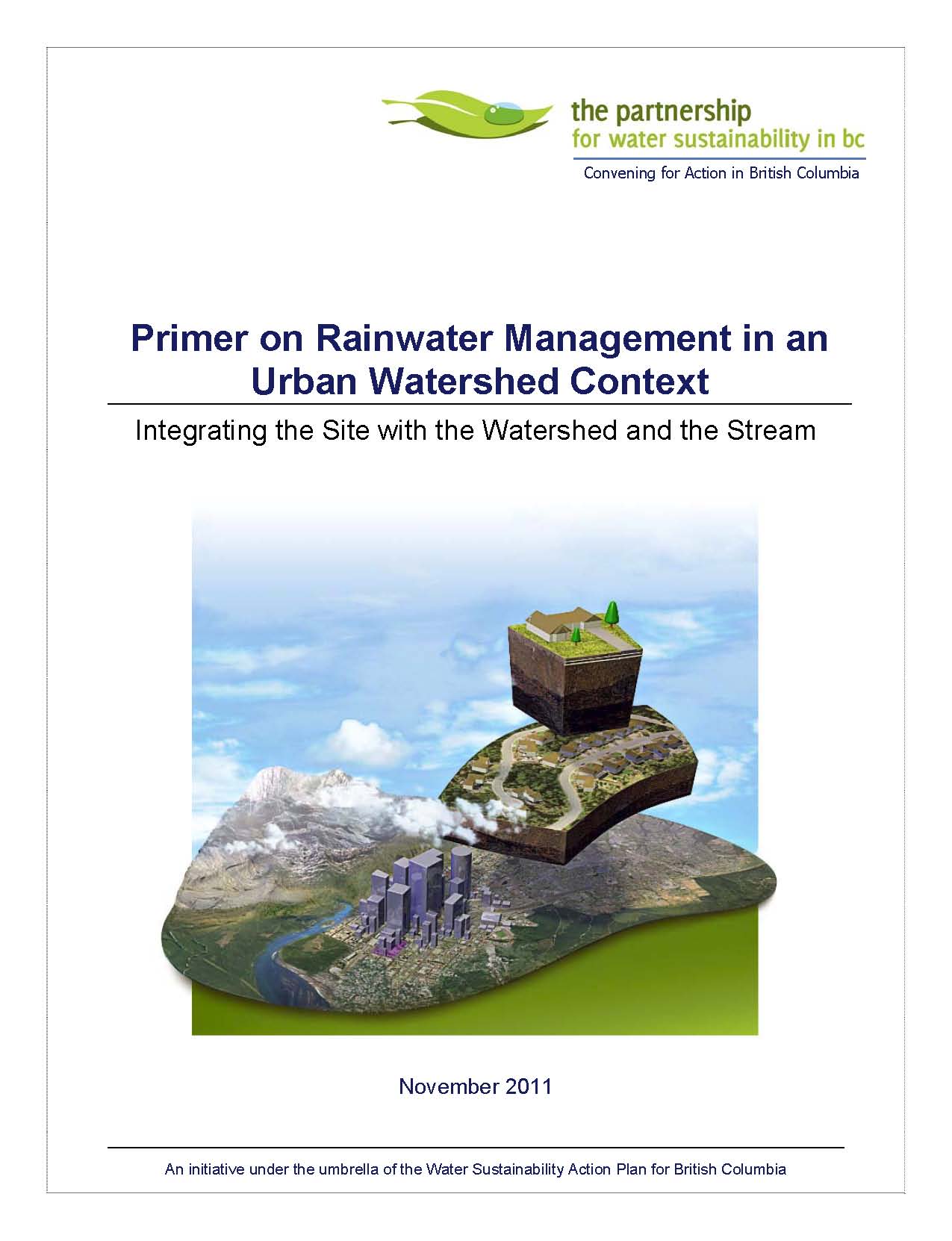FLASHBACK TO NOVEMBER 2011: Partnership for Water Sustainability released “Primer on Rainwater Management in an Urban Watershed Context”
Integrating the Site with the Watershed and Stream
ln 2002, the Province released Stormwater Planning: A Guidebook for British Columbia. Looking at rainfall differently led to a new approach to rainwater management. The Guidebook provided a science-based framework to guide development of the ‘stormwater’ component of Liquid Waste Management Plans.
 “When the Province released the Guidebook in 2002, we thought we would be doing well if we could just hold the line and protect what we had. We hoped we might have enough successes after 20 years that maybe, just maybe, we would then improve conditions in the decades that followed,” states Peter Law, Chair of the Guidebook Steering Committee (2000-2002). Formerly with the Ministry of Environment, Peter Law is a founding Director of the Partnership for Water Sustainability in British Columbia.
“When the Province released the Guidebook in 2002, we thought we would be doing well if we could just hold the line and protect what we had. We hoped we might have enough successes after 20 years that maybe, just maybe, we would then improve conditions in the decades that followed,” states Peter Law, Chair of the Guidebook Steering Committee (2000-2002). Formerly with the Ministry of Environment, Peter Law is a founding Director of the Partnership for Water Sustainability in British Columbia.
“Well, it is 2011 and we have exceeded our own expectations. What was a dream in 2002 may now in fact be achievable. We have the tools and experience to ‘design with nature’ in order to soften the ‘water footprint’ of development. Watershed restoration is within our grasp.”
Science-Based Understanding
“Building on the Guidebook foundation, the Partnership has released the Primer on Rainwater Management in an Urban Watershed Context. The purpose of the Primer is to provide engineers and non-engineers with a common understanding of how a science-based approach to rainwater management has evolved since the mid-1990s.” Peter Law also explains that:
- First, research by Richard Horner and Chris May in Washington State identified limiting factors for stream health, and established an order-of-priority. Their findings provided a road map for integrated rainwater management.
- Next, the “made in BC” concept of the Rainfall Spectrum led us to look at rainfall differently. This resulted in the Water Balance Methodology and the ability to quantify and assess the hydrologic effectiveness of ‘green’ infrastructure.
- After that, a fresh look at other early engineering and biophysical research opened a window into the science of stream erosion and how it could be correlated with stream health.
- The synthesis of the three streams of thinking then provided the technical foundation for ‘designing with nature’ in order to soften the ‘water footprint’ of development. In BC, we have continued to build on this foundation.
“ Pioneer research yielded guiding principles; these are standing the test of time. Evaluation of, and analyses using, the entire rainfall and stream discharge spectrum allows us to see new connections to stream health and to begin the process of creating effective mitigation strategies,” adds Kim Stephens, Executive Director, Partnership for Water Sustainability in British Columbia.
Pioneer research yielded guiding principles; these are standing the test of time. Evaluation of, and analyses using, the entire rainfall and stream discharge spectrum allows us to see new connections to stream health and to begin the process of creating effective mitigation strategies,” adds Kim Stephens, Executive Director, Partnership for Water Sustainability in British Columbia.
TO LEARN MORE:
To download a copy, click on Primer on Rainwater Management in an Urban Watershed Context.
Posted December 2011


